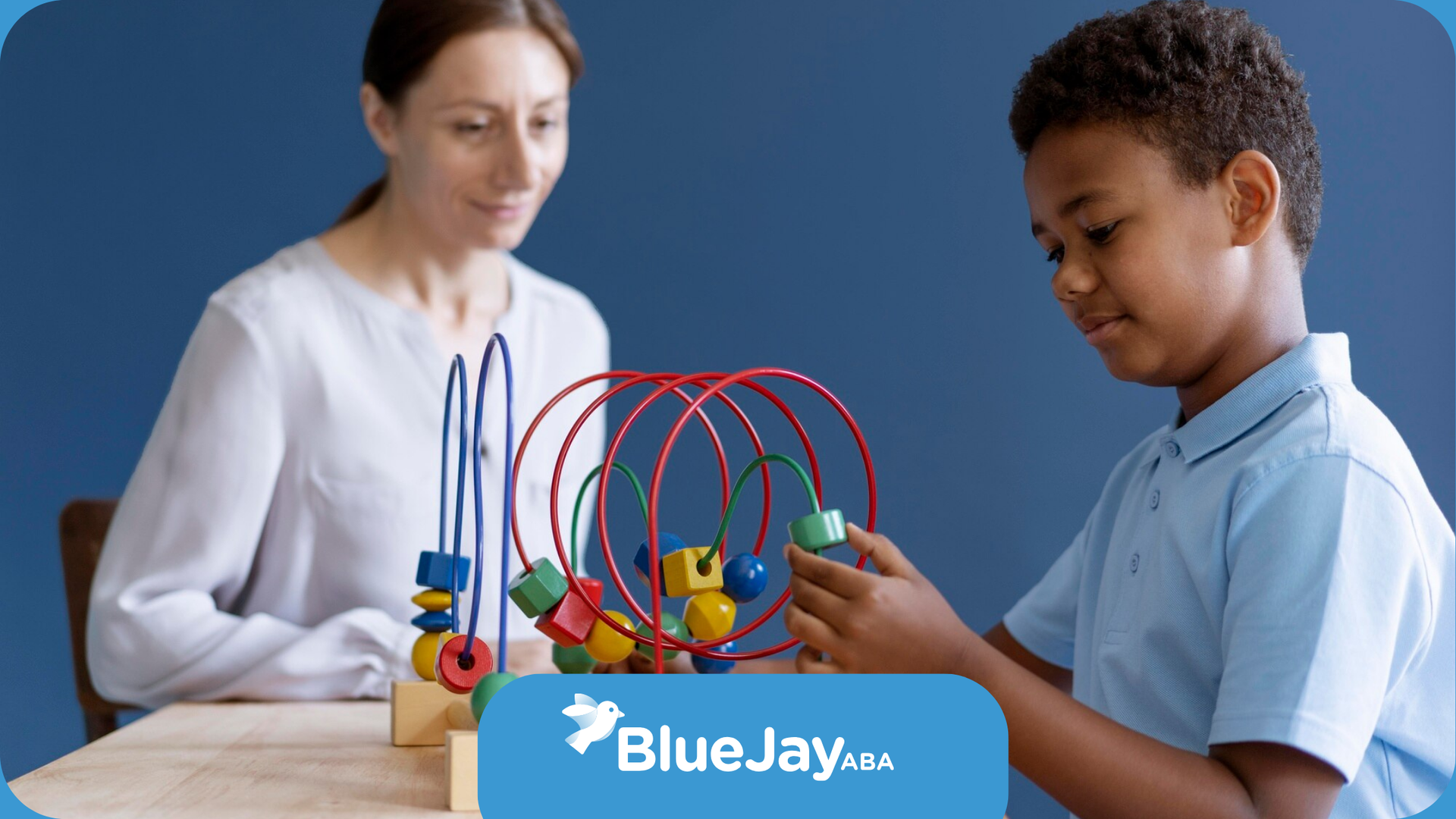Effective Treatments for Autism in Kids
Autism spectrum disorder (ASD) presents unique challenges for young children, affecting social skills and daily activities. Effective treatment for autism in kids involves a comprehensive approach, including behavioral interventions, speech therapy, occupational therapy, physical therapy, and nutritional support.
These therapies aim to enhance communication, motor skills, and overall quality of life for children on the spectrum. By exploring innovative strategies and integrating educational techniques, caregivers can provide tailored support to meet the individual needs of children with autism.
Treatments for Autism in Kids
When it comes to the best treatment for autism spectrum disorder (ASD), early intervention is key. The earlier therapy is started, the better the chances for a child’s success. One of the most widely recognized and effective treatments for autism is Applied Behavior Analysis (ABA). ABA focuses on using behavioral interventions, such as Early Intensive Behavioral Intervention (EIBI), to teach and reinforce positive behaviors and reduce unwanted behaviors.
It has been proven to be effective in improving communication skills, social interactions, and overall quality of life for children with autism. By starting therapy early and utilizing ABA techniques, children with autism can make significant progress and develop essential skills for daily life.
Below are some options considered to be the Best Treatment for Autism in the World:
1. Behavioral Interventions: Understanding Applied Behavioral Analysis (ABA)
Applied Behavior Analysis (ABA) is a widely recognized and evidence-based treatment for autism spectrum disorder (ASD). It focuses on using behavioral interventions to teach and reinforce positive behaviors while reducing unwanted behaviors. ABA is based on the principles of behavior analysis, which involve breaking down complex skills into smaller, manageable steps.
There are different types of ABA, each tailored to the individual’s needs and goals. These include behavioral interventions that target communication, social skills, personal care, and academic work. Studies have shown that early and intensive ABA can lead to significant and lasting improvements in children with ASD.
One of the techniques used in ABA is discrete trial training (DTT), where specific skills are taught through repetition and reinforcement. This involves breaking down a desired behavior into smaller steps and providing positive reinforcement for each correct response. By using this method, children with autism can learn new skills and improve their language, social, and adaptive behaviors, including through the use of floortime in the Developmental, Individual Differences, Relationship-Based Approach (DIR).
Positive reinforcement is a key aspect of ABA. It involves providing rewards or praise for desired behaviors, which helps motivate and reinforce those behaviors. By focusing on positive reinforcement, ABA helps children with autism develop new skills and replace unwanted behaviors with more appropriate ones.
ABA is a comprehensive and individualized treatment approach that can be tailored to meet the specific needs of each child with autism. It is effective in improving communication, social skills, and overall quality of life for children with autism.
Like what we do at Blue Jay ABA, our team of BCBA-certified therapists works closely with families to develop personalized treatment plans that address each child’s unique needs. We utilize evidence-based ABA techniques, like those discussed throughout this article, to foster communication skills, reduce challenging behaviors, and promote social interaction in a fun and engaging way.
Our compassionate therapists create a positive and supportive environment where every child feels safe to learn and grow. Contact Blue Jay ABA today for a free consultation and let’s help your child unlock their full potential.
2. The Role of Speech Therapy in Enhancing Communication Skills
Speech therapy plays a crucial role in the treatment for autism in kids by targeting and enhancing communication skills. Children with autism often face challenges in verbal and nonverbal communication, making it difficult for them to express their needs and engage in social interactions.
Speech therapy can help address these challenges and improve overall communication abilities, including nonverbal skills like making eye contact, taking turns in a conversation, and using and understanding gestures. Here are some ways in which speech therapy can enhance communication skills in children with autism:
- Teaching verbal and nonverbal communication techniques
- Improving speech rhythm, sentence structure, and vocabulary
- Introducing alternative communication methods such as sign language or picture symbols
- Enhancing social skills and understanding of nonverbal cues
- Building conversational skills and turn-taking
- Promoting eye contact and expressive language
Speech therapy is highly individualized, with therapy sessions tailored to the specific needs and abilities of each child. By working with a speech-language pathologist, children with autism can make significant progress in their communication skills, leading to improved social interactions and overall quality of life.
3. Occupational Therapy for Autism: Supporting Daily Living Skills
Occupational therapy (OT) is a vital component of the treatment for autism, focusing on supporting and developing daily living skills. Children with autism often face challenges in activities of daily living, such as dressing, grooming, and feeding themselves.
Occupational therapists work with children to improve their independence and functional abilities in these areas through the use of life skills training. Here are some ways in which occupational therapy can support daily living skills in children with autism:
- Developing fine motor skills required for tasks like writing or using utensils
- Enhancing gross motor skills for activities like walking or climbing stairs
- Improving sensory integration and self-regulation
- Addressing sensory processing issues that may impact daily activities
- Promoting adaptive strategies for transitions and managing personal space
- Enhancing problem-solving and cognitive skills related to daily living
Occupational therapy is tailored to the individual needs and goals of each child. By working with an occupational therapist, children with autism can gain greater independence and improve their overall quality of life.
4. Physical Therapy: Promoting Motor Skills and Coordination
Physical therapy is an important approach to treatment for autism in kids, focusing on promoting motor skills and coordination. Children with autism often experience challenges in their physical development and may struggle with tasks that require coordination and balance. Physical therapy can help address these challenges and improve everyday skills. Here are some ways in which physical therapy can promote motor skills and coordination in children with autism:
- Developing strength, balance, and coordination through targeted exercises and activities
- Enhancing gross motor skills required for tasks like walking, running, and jumping
- Improving fine motor skills for activities like writing, cutting, and manipulating small objects
- Addressing sensory integration issues that may impact motor skills
- Promoting body awareness and spatial orientation
Physical therapy sessions are tailored to the specific needs and abilities of each child. By working with a physical therapist, children with autism can improve their motor skills and coordination, leading to increased independence and participation in daily activities.
5. Nutritional Approaches to Support Overall Health
Nutritional approaches play an important role in supporting the overall health and well-being of children with autism. Children with autism may have specific dietary needs or sensitivities that require attention. Here are some ways in which nutritional approaches can support the overall health of children with autism:
- Addressing specific dietary needs, such as food allergies or intolerances
- Providing a balanced and nutritious diet to support growth and development
- Addressing sensory sensitivities to certain textures, tastes, or smells of food
- Supporting gut health, as gastrointestinal issues are common in children with autism
Working with a nutrition specialist to create a meal plan that meets the specific needs and preferences of the child
Parents and caregivers need to be mindful of their children’s nutritional needs and work with healthcare professionals to develop a plan that supports their overall health and well-being.
6. Cognitive Behavioral Therapy: Managing Emotional and Behavioral Challenges
Cognitive Behavioral Therapy (CBT) is a therapeutic approach that focuses on managing emotional and behavioral challenges in children with autism. CBT helps children develop coping strategies and improve emotional regulation. Here are some ways in which CBT can help manage emotional and behavioral challenges in children with autism:
- Teaching emotional skills and helping children recognize and express their emotions
- Promoting self-regulation and developing coping strategies for challenging situations
- Addressing anxiety and stress by teaching relaxation techniques and problem-solving skills
- Enhancing social skills and improving the understanding of social cues and interactions
- Providing support and guidance for parents and caregivers in managing behavioral challenges
CBT is a highly individualized therapy that can be tailored to meet the specific needs of each child. By working with a trained therapist, children with autism can develop essential emotional and behavioral skills, leading to improved overall well-being and functioning.
Exploring Innovative Therapies for ASD
In addition to traditional therapies, there are also innovative therapies that can be beneficial for children with autism. These therapies focus on unique approaches to address specific challenges and promote overall well-being. Some examples of innovative therapies for autism include sensory integration therapy, music therapy, art therapy, and equine therapy.
These therapies aim to enhance sensory processing, promote self-expression, improve social skills, and develop new skills through creative and engaging activities. While not all of these therapies may be suitable for every child, they offer alternative options that can complement traditional treatments and provide additional benefits for children with autism.
7. Music Therapy: Harnessing the Power of Melody and Rhythm
Music therapy is another treatment for autism in kids option. It utilizes the power of melody and rhythm to support children with autism. Music has a unique ability to engage and stimulate the brain, making it an effective tool for promoting social skills, emotional expression, and overall well-being. Here are some ways in which music therapy can benefit children with autism:
- Enhancing social skills through group music activities and interactions
- Facilitating emotional expression and communication through music
- Improving sensory integration and motor skills through rhythmic movements
- Promoting relaxation and reducing anxiety through soothing music
- Providing a creative and engaging outlet for self-expression and self-discovery
Music therapy sessions are tailored to the individual needs and preferences of each child. By engaging in music-based activities and interventions, children with autism can experience the therapeutic benefits of music and improve their overall functioning and quality of life.
8. Art Therapy: Encouraging Expression Through Creativity
Art therapy is an innovative treatment for autism in kids that harnesses the power of creativity to support children with autism. Art provides a nonverbal and expressive outlet for communication, allowing children with autism to express themselves in ways that may be challenging through traditional means. Here are some ways in which art therapy can benefit children with autism:
- Encouraging self-expression and communication through visual art
- Promoting creativity and imagination
- Providing a nonverbal outlet for emotional expression and exploration
- Enhancing fine motor skills through art techniques and activities
- Fostering self-esteem and self-confidence
Art therapy sessions are tailored to the individual needs and abilities of each child. By engaging in art-based activities and interventions, children with autism can develop new skills, express themselves creatively, and experience the therapeutic benefits of art.
9. Equine Therapy: Building Skills Through Horseback Riding
Equine therapy, also known as therapeutic horseback riding, is an innovative types of therapy for autism that utilizes interactions with horses to support children with autism. The unique bond between humans and horses can provide numerous benefits for individuals with autism. Here are some ways in which equine therapy can benefit children with autism:
- Developing social skills through interactions with horses and trainers
- Improving coordination, balance, and motor skills through horseback riding
- Enhancing sensory integration and body awareness
- Building trust and emotional connections through nonverbal cues
- Promoting self-confidence and self-esteem
Equine therapy sessions are supervised by trained professionals and take place in a safe and controlled environment. By engaging in activities involving horses, children with autism can experience the therapeutic benefits of equine therapy and develop new skills uniquely and engagingly.
10. Sensory Integration Therapy: Addressing Sensory Processing Issues
Another option for treatment for autism in kids is sensory integration therapy. It is an innovative approach that focuses on addressing sensory processing issues in children with autism. Children with autism often experience challenges in processing sensory information, which can impact their daily activities and overall functioning.
Sensory integration therapy aims to improve sensory processing and integration through targeted activities and interventions. Here are some ways in which sensory integration therapy can benefit children with autism:
- Addressing sensory sensitivities and reducing sensory overload
- Improving sensory regulation and self-regulation skills
- Enhancing body awareness and spatial orientation
- Promoting adaptive strategies for daily activities
- Facilitating engagement in social interactions and play
Sensory integration therapy is highly individualized and tailored to the specific sensory needs of each child. By engaging in sensory-based activities and interventions, children with autism can improve their sensory processing and integration, leading to improved overall functioning and quality of life.
Integrating Educational Strategies
In addition to therapy approaches, integrating educational strategies is crucial for providing comprehensive support to children with autism. Education plays a vital role in helping children with autism develop academic skills, social skills, and independence. Inclusive education, which involves mainstreaming children with autism into regular classrooms, can provide opportunities for social interactions and peer learning.
Social-relational approaches, such as the Developmental, Individual Differences, and Relationship-Based models, can also be incorporated into educational strategies to encourage communication and follow the interests of the individual.
Additionally, special education programs specifically designed for children with autism can provide tailored instruction and support to address their unique learning needs. By integrating educational strategies, children with autism can receive the necessary educational support to reach their full potential and succeed in their academic and social development.
11. Special Education Programs: Tailored Learning Approaches
Special education programs offer tailored learning approaches for children with autism, addressing their individual needs and challenges. These programs focus on providing personalized support to enhance learning outcomes and social skills development.
By incorporating specialized teaching methods and resources, special education aims to create a conducive learning environment that caters to the unique requirements of children on the autism spectrum, promoting their academic progress and overall well-being.
12. Inclusive Education: Benefits of a Supportive Classroom Environment
Inclusive education offers crucial benefits through a supportive classroom environment for children on the autism spectrum. Integrating children of all abilities fosters social skills and acceptance among peers.
This inclusive setting provides valuable opportunities for children with autism to learn from their typically developing peers, enhancing their communication and social interactions. A supportive classroom environment encourages understanding and empathy, creating a positive atmosphere that helps children with autism thrive alongside their peers.
Conclusion
In conclusion, effective treatment for autism in kids involves a multi-faceted approach, utilizing various therapies such as ABA, speech therapy, occupational therapy, physical therapy, and nutritional support. Integrating innovative therapies like music therapy, art therapy, equine therapy, and sensory integration further enhances the treatment process. Educational strategies play a crucial role in supporting children with autism in academic settings. By combining these interventions tailored to the child’s needs, we can significantly improve their quality of life and overall well-being.
Frequently Asked Questions
What is the best therapy for autism?
The best therapy for autism varies from person to person. However, some evidence-based therapies that have shown positive results include the Early Start Denver Model (ESDM), Pivotal Response Training (PRT), and Applied Behavior Analysis (ABA). These therapies focus on improving communication, social skills, and behavior in children with autism.
Can a child with autism improve?
Yes, a child with autism can improve with the right interventions and support. Early intervention, tailored treatment plans, and a supportive environment can help children with autism develop new skills, improve their quality of life, and reach their full potential.
What are the first steps after receiving an autism diagnosis for my child?
After receiving an autism diagnosis for your child, the first steps include seeking out treatment options, finding a team of professionals experienced in autism, and creating an individualized treatment plan. It’s important to consult with your child’s pediatrician and connect with local resources and support networks.
Need Assistance?
We’re Here to Help
Our expert team is ready to support your child’s development and well-being.
We are committed to offering tailored ABA therapy solutions that promote growth.
Contact us today for Professional ABA Therapy.
Related Posts
MENU
GET IN TOUCH
STAY CONNECTED
Join our newsletter and find out more
NewsletterFooter
We will get back to you as soon as possible
Please try again later








